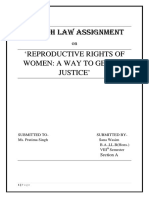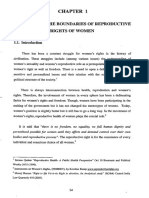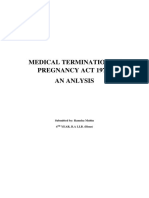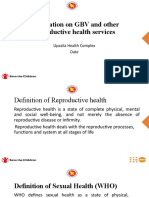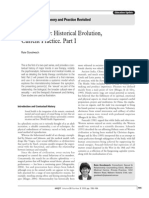0% found this document useful (0 votes)
87 views17 pagesWomen and Reproductive Choices: Submited By-Apoorva Singh (Roll No: 1385)
The document discusses women's reproductive rights and choices. It provides context on the social and legal issues surrounding reproductive rights, including the right to contraception and abortion. The document examines the abortion debate in the US, including the landmark Roe v. Wade Supreme Court decision that legalized abortion nationwide. It also discusses the legalization of abortion in India under the Medical Termination Act of 1971 and limitations to unmarried women's access to abortion.
Uploaded by
Apoorva SinghCopyright
© © All Rights Reserved
We take content rights seriously. If you suspect this is your content, claim it here.
Available Formats
Download as DOCX, PDF, TXT or read online on Scribd
0% found this document useful (0 votes)
87 views17 pagesWomen and Reproductive Choices: Submited By-Apoorva Singh (Roll No: 1385)
The document discusses women's reproductive rights and choices. It provides context on the social and legal issues surrounding reproductive rights, including the right to contraception and abortion. The document examines the abortion debate in the US, including the landmark Roe v. Wade Supreme Court decision that legalized abortion nationwide. It also discusses the legalization of abortion in India under the Medical Termination Act of 1971 and limitations to unmarried women's access to abortion.
Uploaded by
Apoorva SinghCopyright
© © All Rights Reserved
We take content rights seriously. If you suspect this is your content, claim it here.
Available Formats
Download as DOCX, PDF, TXT or read online on Scribd
/ 17
